


xxxxxThe Italian composer Gioacchino Rossini produced nearly 40 operas, including his famous comic opera The Barber of Seville, first performed in 1816. In his comic works he created the romantic style, noted for its tuneful melodies and “beautiful singing” (bel canto). Other works in this style were The Silken Ladder, The Touchstone, The Italian Girl in Algiers, and Cinderella. His light, sparkling music also made up many of his overtures, and these have become concert pieces in their own right. He composed a number of successful serious works, such as Othello and Armida, and produced his most ambitious opera William Tell in 1829. After this he abandoned the theatre and wrote mainly for his own pleasure. This included religious works, notably his Stabat Mater of 1842, and a collection of songs and piano pieces. During his career, he met Ludwig von Beethoven and was visited by Richard Wagner. His Lady of the Lake of 1819 was based on the poem by Sir Walter Scott, and in 1824 he composed a lament on the death of Lord Byron. As we shall see, his fellow countrymen Bellini and Donizetti continued the bel canto style, and it was enhanced by the Italian operatic masters Verdi and Puccini well into the 20th century.
GIOACCHINO ANTONIO ROSSINI 1792
-
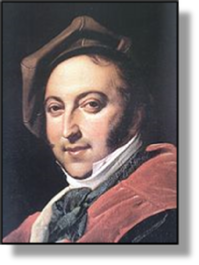 xxxxxThe Barber of Seville, the most
famous comic opera of the Italian composer Gioacchino Rossini, was
produced in Rome in 1816. Over the next
eight years he produced 20 operatic works and, together with his
fellow countrymen Vicenzo Bellini and Gaetano Donizetti, created the
Romantic style of Italian opera, noted for its tuneful melodies and
“beautiful singing” (bel canto). After
composing his ambitious, large-
xxxxxThe Barber of Seville, the most
famous comic opera of the Italian composer Gioacchino Rossini, was
produced in Rome in 1816. Over the next
eight years he produced 20 operatic works and, together with his
fellow countrymen Vicenzo Bellini and Gaetano Donizetti, created the
Romantic style of Italian opera, noted for its tuneful melodies and
“beautiful singing” (bel canto). After
composing his ambitious, large-
xxxxxRossini was born into a
musical family in Pesaro, northern Italy. His father played the
trumpet in the town band, and his mother, a singer, occasionally
played secondary roles in local operatic performances. Not
surprisingly, this home-
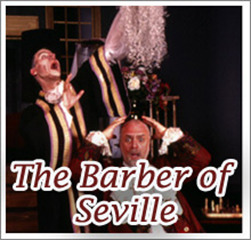 xxxxxOn the strength of this series of successes, in 1815 he
was appointed musical director of the San Carlo Opera House in
Naples. His first production, Elizabeth, Queen of
England, met with public acclaim, and in 1816 he was
invited to Rome for the carnival season. It was here that he
produced his masterpiece, The Barber of Seville,
written in 16 days and based on the play by the French dramatist
Pierre Beaumarchais. It was not, in fact, an immediate success, but
quickly gained in popularity, and is today regarded as one of the
finest comic operas of all time. He then went on to produce a string
of successful operatic works. These included Othello
(a setting of Shakespeare’s play), Cinderella and
The Thieving Magpie in 1817, and The
Lady of the Lake (based on the poem by Sir Walter Scott)
two years later.
xxxxxOn the strength of this series of successes, in 1815 he
was appointed musical director of the San Carlo Opera House in
Naples. His first production, Elizabeth, Queen of
England, met with public acclaim, and in 1816 he was
invited to Rome for the carnival season. It was here that he
produced his masterpiece, The Barber of Seville,
written in 16 days and based on the play by the French dramatist
Pierre Beaumarchais. It was not, in fact, an immediate success, but
quickly gained in popularity, and is today regarded as one of the
finest comic operas of all time. He then went on to produce a string
of successful operatic works. These included Othello
(a setting of Shakespeare’s play), Cinderella and
The Thieving Magpie in 1817, and The
Lady of the Lake (based on the poem by Sir Walter Scott)
two years later.
xxxxxHis more serious work, Moses in Egypt, produced in Naples in 1818, was followed by a number of works in similar vein, such as Armida, Ermione, and Zelmira. In 1822 he travelled abroad and was enthusiastically received wherever he went. He visited Vienna, where he met the German composer Ludwig von Beethoven, stayed for a short time in Paris, and then travelled to London. There he met George IV and, on learning of the untimely death in Greece of Lord Byron, he wrote a lament for eight voices on the death of the English romantic poet.
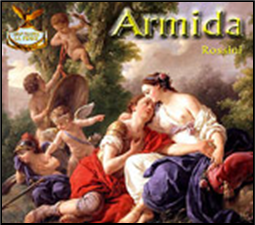 xxxxxNow at the height of his career, Rossini returned to
Paris in 1824, and was appointed director of the Théâtre-
xxxxxNow at the height of his career, Rossini returned to
Paris in 1824, and was appointed director of the Théâtre-
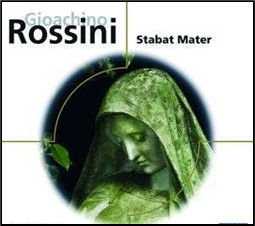
xxxxxTo this period of self-
xxxxxRossini showed a remarkable
skill at creating dramatic effect in his serious works, but it is
for the bel canto style of his comic
operas that he is remembered today. In these, the drama takes second
place to his lively, melodious music, full of light, bubbling wit,
and designed, in the main, to test the acting as well as the singing
ability of his leading parts. He produced these effervescent, good-
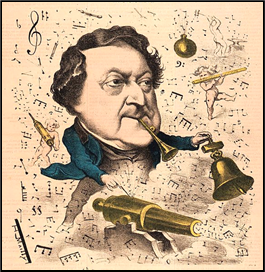
xxxxxIn all, Rossini composed 37
operas -
xxxxxIncidentally,
In his later years Rossini set to music part of Dante’s Divine
Comedy. Some of his piano music from this period was later
made into a ballet by the Italian composer Ottorino
Respighi (1879-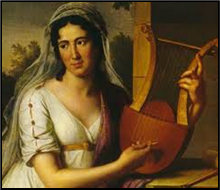 orchestral
suite Rossiniana. ……
orchestral
suite Rossiniana. ……
xxxxx…… In
1822 Rossini married his long-
xxxxx…… The French writer Stendhal wrote a life of Rossini in 1823. It was not accurate in every detail, but it provided quite an interesting study of the man himself. Later, in 1860, Rossini was visited by the German composer Richard Wagner, and their interesting conversation on that occasion was later recorded by Wagner in his essay A Memory of Rossini. ……
xxxxx…… Rossini had a reputation not only as a bon viveur, but also as a humorous critic. We are told that one day a young, aspiring composer came to him with two pieces for his consideration. He played the first one and waited for the verdict. “I prefer the other one”, said Rossini! And when he first heard Berlioz’s revolutionary Symphony Fantastique, he quipped, “Thank God it isn’t music!”
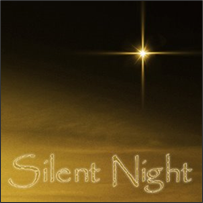 xxxxxItxwas in 1818, the year that
Rossini produced his Moses in Egypt, that
the first performance was given of the well-
xxxxxItxwas in 1818, the year that
Rossini produced his Moses in Egypt, that
the first performance was given of the well-
G3c-
Acknowledgements
Rossini: 1820, artist unknown –
International Museum and Library of Music, Bologna, Italy. Caricature: cover illustration by the artist H. Mailly (no
details) for the French satirical magazine Le
Hanneton, July 1867 – National Library of France, Paris. Colbran: by the German artist Johann Heinrich Schmidt (1749-


